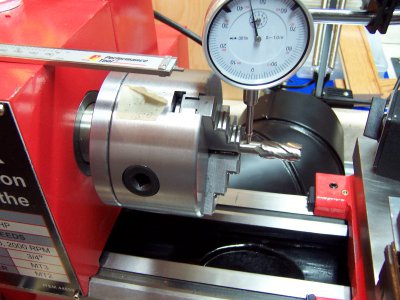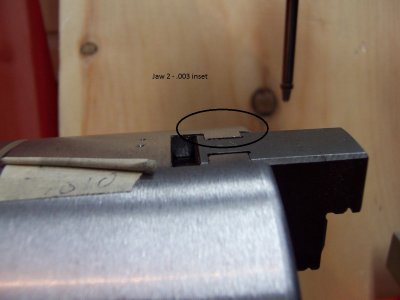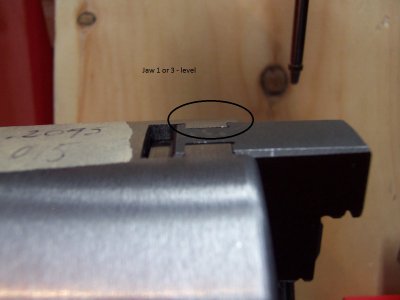I have a HF 8x12 Lathe and I had runout of .007 on a 1/2 inch shank mill bit. I have trued up the body of the chuck onto the spindle and now have that at .0005 minus. I have taken the chuck totally apart, deburred and cleaned and reassembled and I still have unacceptable reading on runout. Can anyone tell me how to fix this without buying a tool post grinder and refinishing the grip, as if it is a problem with a jaw I don't want to band aid each internal external grip, if you know what I mean.
(PS: I also tried multiple tightening methods but the reading remain the same within a .0005 of any previous reading)
To get to the root of the problem I took 2 reading. 1 on the end mill shank as I hand rotated and 1 on the depth of the end of the jaw from the chuck body itself. To get accurate reading on the jaw end, I centered the depth end of a micrometer and rocked it balanced off the chuck body.
Clearly jaw 1 and 3 have an induced problem, because jaw 2 is going too far toward the center when gripping the material, which I could always remember to add a shim onto my working material of .002 to each of 1 and 3, but where to start to fix it ???
Any help would be appreciated.
Here are my reading:
Jaw 1 Drop = .0715, Runout = .0135
Jaw 2 Drop = .0740, Runout = .0100
Jaw 3 Drop = .0725, Runout = .0145


(PS: I also tried multiple tightening methods but the reading remain the same within a .0005 of any previous reading)
To get to the root of the problem I took 2 reading. 1 on the end mill shank as I hand rotated and 1 on the depth of the end of the jaw from the chuck body itself. To get accurate reading on the jaw end, I centered the depth end of a micrometer and rocked it balanced off the chuck body.
Clearly jaw 1 and 3 have an induced problem, because jaw 2 is going too far toward the center when gripping the material, which I could always remember to add a shim onto my working material of .002 to each of 1 and 3, but where to start to fix it ???
Any help would be appreciated.
Here are my reading:
Jaw 1 Drop = .0715, Runout = .0135
Jaw 2 Drop = .0740, Runout = .0100
Jaw 3 Drop = .0725, Runout = .0145


Last edited:



